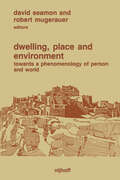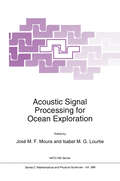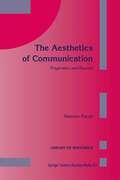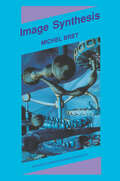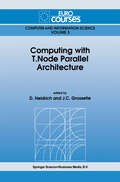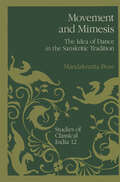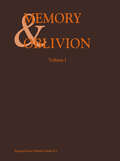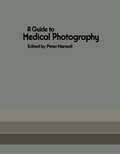- Table View
- List View
Dwelling, Place and Environment: Towards a Phenomenology of Person and World
by RobertMugerauer DavidSeamonthemes among the essays resurface and resonate. Though our request for essays was broad and open-ended, we found that topics such as seeing, authenticity, interpretation, wholeness, care, and dwelling ran as undercur rents throughout. Our major hope is that each essay plays a part in revealing a larger whole of meaning which says much about a more humane relation ship with places, environments and the earth as our home. Part I. Beginnings and directions At the start, we recognize the tremendous debt this volume owes to philosopher Martin Heidegger (1890-1976), whose ontological excavations into the nature of human existence and meaning provide the philosophical foundations for many of the essays, particularly those in Part I of the volume. Above all else, Heidegger was regarded by his students and colleagues as a master teacher. He not only thought deeply but was also able to show others how to think and to question. Since he, perhaps more than anyone else in this century, provides the instruction for dOing a phenomenology and hermeneutic of humanity's existential situation, he is seminal for phenomenological and hermeneutical research in the environmental disci plines. He presents in his writings what conventional scholarly work, especially the scientific approach, lacks; he helps us to evoke and under stand things through a method that allows them to come forth as they are; he provides a new way to speak about and care for our human nature and environment.
Proceedings of the Fourth European Conference on Computer-Supported Cooperative Work ECSCW ’95: 10–14 September, 1995, Stockholm, Sweden
by KjeldSchmidt YngveSundblad HansMarmolinComputer Supported Cooperative Work (CSCW) is an interdisciplinary research area devoted to exploring the issues of designing computer-based systems that enhance the abilities to cooperate and integrate activities in an efficient and flexible manner for people in cooperative work situations. This volume is a rigorous selection of papers that represent both practical and theoretical approaches to CSCW from many leading researchers in the field. As an interdisciplinary area of research, CSCW brings together widely disparate research traditions and perspectives from computer, human, organisational and design sciences. The papers selected reflect a variety of approaches and cultures in the field. Audience: Of interest to a wide audience because of the huge practical impact of the issues and the interdisciplinary nature of the problems and solutions proposed. In particular: researchers and professionals in computing, sociology, cognitive science, human factors, and system design.
Mathematical Morphology and Its Applications to Image Processing (Computational Imaging and Vision #2)
by Jean Serra Pierre SoilleMathematical morphology (MM) is a theory for the analysis of spatial structures. It is called morphology since it aims at analysing the shape and form of objects, and it is mathematical in the sense that the analysis is based on set theory, topology, lattice algebra, random functions, etc. MM is not only a theory, but also a powerful image analysis technique. The purpose of the present book is to provide the image analysis community with a snapshot of current theoretical and applied developments of MM. The book consists of forty-five contributions classified by subject. It demonstrates a wide range of topics suited to the morphological approach.
Computational Approaches in Supramolecular Chemistry (Nato Science Series C: #426)
by G. WipffSupramolecular chemistry has been defined by J.-M. Lehn as "a highly interdisciplinary field of science covering the chemical, physical, and biological features of chemical species of higher complexity, that are held together and organized by means of intermolecular (noncovalent) binding interactions" (Science, 1993). Recognition, reactivity, and transport represent three basic functional features, in essence dynami~s, which may be translated into structural features. The purpose of the NATO workshop which took place september 1-5, 1993 at the Bischenberg (near Strasbourg) was to present computations which may contribute to the atomic level understanding of the structural and thermodynamical features involved in the processes of molecular recognition and supramolecular organization. of "supra-molecular modeling". Other The main focus was therefore, on the many facets applications of computers in chemistry, such as automation, simulation of processes, procedures for fitting kinetic or thermodynamic data, computer assisted synthetic strategies, use of data bases for structure elucidation or for bibliographic searches, have an obvious impact in supramolecular chemistry as well, but were not presented at the workshop.
Cultural Economics And Cultural Policies
by IldeRizzo AlanPeacockCultural Economics and Cultural Policies offers a unique guide to the state of the art in cultural economics. First, it alerts scholars and students to the necessity for careful definition and measurement of the `cultural sector'. Second, it affords examples of how economic analysis can shed light on the motivation of creative and performing artists and of artistic enterprises. Third, Cultural Economics and Cultural Policies widens the discussion of public policy towards the arts beyond general economic appraisal of arguments for government financial support. It does so by considering the government's role in defining property rights in artistic products and in regulating as well as financing the arts; examining how the criteria for government support are actually applied. Cultural Economics and Cultural Policies will be of interest to economists, students and policy makers.
Acoustic Signal Processing for Ocean Exploration (Nato Science Series C: #388)
by J. M. F Moura Isabel M. G. LourtieAcoustic Signal Processing for Ocean Explortion has two major goals: (i) to present signal processing algorithms that take into account the models of acoustic propagation in the ocean and; (ii) to give a perspective of the broad set of techniques, problems, and applications arising in ocean exploration. The book discusses related issues and problems focused in model based acoustic signal processing methods. Besides addressing the problem of the propagation of acoustics in the ocean, it presents relevant acoustic signal processing methods like matched field processing, array processing, and localization and detection techniques. These more traditional contexts are herein enlarged to include imaging and mapping, and new signal representation models like time/frequency and wavelet transforms. Several applied aspects of these topics, such as the application of acoustics to fisheries, sea floor swath mapping by swath bathymetry and side scan sonar, autonomous underwater vehicles and communications in underwater are also considered.
The Comical: A Philosophical Analysis (Nijhoff International Philosophy Series #47)
by B. DziemidokThe problem of the comical is one of the most interesting issues in aesthetics. Its significance extends well beyond the sphere of aesthetic studies and has at tracted the attention of the scholars working in other fields such as the theorists and historians of particular art forms, sociologists, psychologists, as well as anthropologists, ethnographers and the theorists of education. Philosophy has devoted a lot of attention to the comical. Since Aristotle al most every philosopher has felt obliged to comment on this question. However, even though they have offered a number of accurate observations on the subject, the philosophers involved in the discussion about the comical have earned a reputation of being rather devoid of the sense of the comical and many a time their considerations have been compared to those of a blind man talking about colours. And yet the problem of the comical kept attracting them to such an ex tent that they paid no heed to the difficulties involved and neglected the risk of becoming ridiculous themselves. Adolf Zeissing once remarked that all the litera ture on the comical is a "comedy of errors" committed while defining the comi cal. Yet even he could not resist the temptation of adding another page to this "comedy of errors". Tadeusz Boy-Zeleriski claimed that the good thing about the philosophical writing concerning the comical is that it offers not only the theory of the comical but at the same time is the theory's practical application.
Topics in Knot Theory (Nato Science Series C: #399)
by M. E. BozhüyükTopics in Knot Theory is a state of the art volume which presents surveys of the field by the most famous knot theorists in the world. It also includes the most recent research work by graduate and postgraduate students. The new ideas presented cover racks, imitations, welded braids, wild braids, surgery, computer calculations and plottings, presentations of knot groups and representations of knot and link groups in permutation groups, the complex plane and/or groups of motions. For mathematicians, graduate students and scientists interested in knot theory.
The Aesthetics of Communication: Pragmatics and Beyond (Library of Rhetorics #2)
by H. ParretAESTHETICIZING PRAGMATICS The Gamut of Pragmatics Pragmatics emerged among the sciences of language at the end of the 1960's in reaction to certain totalizing models in linguistics: structuralism (primarily in Europe) and generative grammar (initially in the United States). Certain disciples of Chomsky became dissatisfied with autono mous syntax and later with generative semantics: they decided to break away from their mentor. Whereas Chomsky continued to talk a lot about very little, they defied him by speaking very suggestively about an exces sively broad range of phenomena. Pragmatics -which Bar-Hillel consid ered as a 'wastebasket discipline' in the fifties - nevertheless gained respectability. The history of pragmatics spans, of course, much more than three decades. The Stoic conception of language, in the shadow of the great Greek tradition and therefore intensely subversive, had in fact a pragmatic aim. The term pragmatisch appears in Kant: it expresses a relation with a human goal, this goal being only determinable within a community. This characterization naturally inspires the pragmaticism of l the Neo-Kantian Charles Sanders Peirce . It is this Kant-Peirce lineage that led to Morris and Carnap's rather bland conceptions of pragmatics, after the heavy losses incurred by positivism and behaviorism. In any case, despite the constant presence of a pragmatic approach in the history of thought, this reassessment of pragmatics (against the triumphs proclaimed by structuralism and generativism) was experienced as a Significant break through. A whole range of pragmatics came to the attention of linguists.
Ocean Reverberation
by Dale D. Ellis John R. Preston H. G. UrbanDuring the past decade there has been a renewed interest in active sonar systems at both low and medium frequencies. More recently this interest has been extended to very high frequencies in shallow water. Reverberation often limits the detection performance of these systems, and there is a need to understand the underlying mechanisms that cause the scattering. With more emphasis being given to reverberation phenomena in the Scientific Program of Work at the SACLANT Undersea Research Centre, it was considered an opportune time to host a meeting, bringing together scientists from NATO countries to foster cross-disciplinary dialogue and generate ideas for new research directions. Consequently the Ocean Reverberation Symposium was held 25-29 May 1992 in La Spezia, Italy. Over 60 presentations were made on a diverse selection of topics, of which ten papers will be published as a SACLANTCEN Conference Proceedings. The papers in this volume are grouped into 8 sections, usually in the same order as presented at the corresponding session of the Symposium: Section 1 - Scattering Mechanisms Section 2 - High Frequency Measurements and Mechanisms Section 3 - Reverberation Modelling Section 4 - ARSRP Mid-Atlantic Ridge Experiment Section 5 - Low Frequency Measurements Section 6 - Volume Scattering Section 7 - Signal Processing Issues Section 8 - Applications Taken together the papers show some emerging trends in the research.
Building 2000: Volume 2 Office Buildings, Public Buildings, Hotels and Holiday Complexes
by C. Den Ouden T. C. SteemersThis is the second volume of BUILDING 2000, a pilot project of the Commission's R&D programme 'Solar Energy Applications to Buildings' with the purpose of encouraging the adoption of solar architecture in large buildings. In a first volume, a similar series of studies is presented for the building categories: SCHOOLS, LABORATORIES and UNIVERSITIES, and SPORTS AND EDUCATIONAL CENTRES. In this second volume the results of the design studies illustrating passive solar architecture in buildings in the European Community are presented in particular for the building categories: OFFICE BUILDINGS, PUBLIC BUILDINGS and HOTELS AND HOLIDAY COMPLEXES. There was an enthousiastic response from project teams responsible for the design of 32 large buildings with a total construction budget of more than 140 million ECU. The willingness to improve their building concepts by collaborating with R&D-experts was encouraging to the Commission's action in this field. These two books reflect the results of the exchange of information between the actual design practitioners and the European R&D-community. Within the BUILDING 2000 programme 'Science and Technology at the Service of Architecture' became reality. This was not only realised by the various support activities initiated by BUILD ING 2000, but also by the active exchange of ideas by architects and design team members with R&D-workers during the various workshops held within the BUILDING 2000 programme. I highly recommend architects and engineers interested in passive solar architecture and modem day lighting approaches to study these final products of the BUILDING 2000 programme.
Image Synthesis
by Michel BretThe images produced by means ofcomputers have invaded our daily lives. One has but to see the "identification logos" of most television broadcasts or some advenisement "spots" to be convinced of this. This proves that the synthesis ofimages has reached maturity. The progress that has been made in the last few years allows one to predict the use ofrealistic illustrations in more and more domains ofapplication. It is thus understandable that more and more people seek to understand how these images are produced. Such a person may be an amateur who likes to understand in a general way the processing involved, or he may be a computer scientist who wants to develop some new application using graphics procedures. This book by Michel Bret meets these desires by giving a complete overview of the techniques of image synthesis by computer. The different stages of the creation of a numerical image are explained in detail, and they are accompanied by descriptions of the most modem methods. Thus thegeometrical models that are described go from those with plane polygonal facets, via surfaces of all types, to systems of panicles. Visualization is treated in complete detail, and due attention is given to all the various roads that lead to a realistic image: simple projections on the basis of wire-frame models, the elimination of hidden pans, and fmally the modelling oflight and its effects.
Computing with T.Node Parallel Architecture (Eurocourses: Computer and Information Science #3)
by D. Heidrich J. C. GrossetieParallel processing is seen today as the means to improve the power of computing facilities by breaking the Von Neumann bottleneck of conventional sequential computer architectures. By defining appropriate parallel computation models definite advantages can be obtained. Parallel processing is the center of the research in Europe in the field of Information Processing Systems so the CEC has funded the ESPRIT Supemode project to develop a low cost, high performance, multiprocessor machine. The result of this project is a modular, reconfigurable architecture based on !NMOS transputers: T.Node. This machine can be considered as a research, industrial and commercial success. The CEC has decided to continue to encourage manufacturers as well as research and end-users of transputers by funding other projects in this field. This book presents course papers of the Eurocourse given at the Joint Research Centre in ISPRA (Italy) from the 4th to 8 of November 1991. First we present an overview of various trends in the design of parallel architectures and specially of the T.Node with it's software development environments, new distributed system aspects and also new hardware extensions based on the !NMOS T9000 processor. In a second part, we review some real case applications in the field of image synthesis, image processing, signal processing, terrain modeling, particle physics simulation and also enhanced parallel and distributed numerical methods on T.Node.
Movement and Mimesis: The Idea of Dance in the Sanskritic Tradition (Studies of Classical India #12)
by Mandakranta BoseThe most comprehensive view of the evolution of dancing in India is one that is derived from Sanskrit textual sources. These texts are the basic material that students of the dance in India must examine in order to uncover its past. Since the rebirth of informed interest in dancing in early twentieth century, its antiquity has been acknowledged but precisely what the art was in antiquity remains unclear. Discovering the oldest forms of dancing in India requires, as do other historical quests, a reconstruction of the past and, again as in other historical investigations, the primary sources of knowledge are records from the past. In this case the records are treatises and manuals in Sanskrit that discuss and describe dancing. These are the sources that the present work sets out to mine. These texts taken collectively are more than records of a particular state of the art. They testify to the growth of the theory and practice of the art and thus establish it as an evolving rather than a fixed art form that changed as much in response to its own expanding aesthetic boundaries as to parallel or complementary forms of dance, drama and music that impinged upon it as India's social and political situation changed. When we place the Sanskrit treatises in chronological sequence it becomes clear that the understanding of the art has changed through time, in its infancy as well as in maturer periods.
Memory & Oblivion: Proceedings of the XXIXth International Congress of the History of Art held in Amsterdam, 1–7 September 1996
by A. W. Reinink Jeroen StumpelMemory is a subject that recently has attracted many scholars and readers not only in the general historical sciences, but also in the special field of art history. However, in this book, in which more than 130 papers given at the XXIXth International Congress of the History of Art (Amsterdam) 1996 have been compiled, Memory is also juxtaposed to its counterpart, Oblivion, thus generating extra excitement in the exchange of ideas. The papers are presented in eleven sections, each of which is devoted to a different aspect of memory and oblivion, ranging from purely material aspects of preservation, to social phenomena with regard to art collecting, from the memory of the art historian to workshop practices, from art in antiquity, to the newest media, from Buddhist iconography to the Berlin Wall. The book addresses readers in the field of history, history of art and psychology.
Science and Art Symposium 2000: 3rd International Conference on Flow Interaction of Science and Art with Exhibition/Lectures on Interaction of Science & Art, 28.2 — 3.3 2000 at the ETH Zurich
by A. Gyr Petros D. Koumoutsakos U. BurrSome words about SCART 2000. SCART stands for science and art. SCART meetings are organized in a loose time sequence by an international group of scientists, most of them fluid-dynamicists. The first meeting was held in Hong-Kong, the second one in Berlin, and the third, and latest, one in Zurich. SCART meetings include a scientific conference and a number of art events. The intention is to restart a dialogue between scientists and artists which was so productive in the past. To achieve this goal several lectures given by scientists at the conference are intended for a broader public. In the proceedings they are denoted as SCART lectures. The artists in tum address the main theme of the conference with their contributions. The lectures at SCART 2000 covered the entire field of fluiddynamics, from laminar flows in biological systems to astrophysical events, such as the explosion of a neutron star. The main exhibition by Dutch and Swiss artists showed video and related art under the title 'Walking on Air'. Experimental music was performed in two concerts.
The Theory of the Moiré Phenomenon (Computational Imaging and Vision #15)
by Isaac AmidrorWho has not noticed, on one o~casion or another, those intriguing geometric patterns which appear at the intersection Of repetitive structures such as two far picket fences on a hill, the railings on both sides of a bridge, superposed layers of fabric, or folds of a nylon curtain? This fascinating phenomenon, known as the moire effect, has found useful applications in several fields of science and technology, such as metrology, strain analysis or even document authentication and anti-counterfeiting. However, in other situations moire patterns may have an unwanted, adverse effect. This is the case in the printing world, and, in particular, in the field of colour reproduction: moire patterns which may be caused by the dot-screens used for colour printing may severely deteriorate the image quality and tum into a real printer's nightmare. The starting point of the work on which this book is based was, indeed, in the research of moire phenomena in the context of the colour printing process. The initial aim of this research was to understand the nature and the causes of the superposition moire patterns between regular screens in order to find how to avoid, or at least minimize, their adverse effect on colour printing. This interesting research led us, after all, to a much more far reaching mathematical understanding of the moire phenomenon, whose interest stands in its own right, independently of any particular application.
Computer-Aided Design of User Interfaces II: Proceedings of the Third International Conference on Computer-Aided Design of User Interfaces, 21–23 October, 1999, Louvain-la-Neuve, Belgium
by Jean Vanderdonckt Angel PuertaProceedings of the Third International Conference on Computer-Aided Design of User Interfaces, 21-23 October 1999, Louvain-la-Neuve, Belgium
Confluence of Computer Vision and Computer Graphics (NATO Science Partnership Subseries: 3 #84)
by Ales Leonardis F. Solina Ruzena BajcsyA collection of original contributions by researchers who work at the forefront of a new field, lying at the intersection of computer vision and computer graphics. Several original approaches are presented to the integration of computer vision and graphics techniques to aid in the realistic modelling of objects and scenes, interactive computer graphics, augmented reality, and virtual studios. Numerous applications are also discussed, including urban and archaeological site modelling, modelling dressed humans, medical visualisation, figure and facial animation, real-time 3D teleimmersion telecollaboration, augmented reality as a new user interface concept, and augmented reality in the understanding of underwater scenes.
Image Textures and Gibbs Random Fields (Computational Imaging and Vision #16)
by Georgy L. Gimel'farbImage analysis is one of the most challenging areas in today's computer sci ence, and image technologies are used in a host of applications. This book concentrates on image textures and presents novel techniques for their sim ulation, retrieval, and segmentation using specific Gibbs random fields with multiple pairwise interaction between signals as probabilistic image models. These models and techniques were developed mainly during the previous five years (in relation to April 1999 when these words were written). While scanning these pages you may notice that, in spite of long equa tions, the mathematical background is extremely simple. I have tried to avoid complex abstract constructions and give explicit physical (to be spe cific, "image-based") explanations to all the mathematical notions involved. Therefore it is hoped that the book can be easily read both by professionals and graduate students in computer science and electrical engineering who take an interest in image analysis and synthesis. Perhaps, mathematicians studying applications of random fields may find here some less traditional, and thus controversial, views and techniques.
Advances in Intelligent Systems: Concepts, Tools and Applications (Intelligent Systems, Control and Automation: Science and Engineering #21)
by S. G. TzafestasIntelligent Systems involve a large class of systems which posses human-like capabilities such as learning, observation, perception, interpretation, reasoning under uncertainty, planning in known and unknown environments, decision making, and control action. The field of intelligent systems is actually a new interdisciplinary field which is the outcome of the interaction, cooperation and synergetic merging of classical fields such as system theory, control theory, artificial intelligence, information theory, operational research, soft computing, communications, linguistic theory, and others. Integrated intelligent decision and control systems involve three primary hierarchical levels, namely organization, coordination and execution levels. As we proceed from the be performed organization to the execution level, the precision about the jobs to increases and accordingly the intelligence required for these jobs decreases. This is in compliance with the principle of increasing precision with decreasing intelligence (IPOI) known from the management field and theoretically established by Saridis using information theory concepts. This book is concerned with intelligent systems and techniques and gives emphasis on the computational and processing issues. Control issues are not included here. The contributions of the book are presented in four parts as follows.
CAAD futures 1997: Proceedings of the 7th International Conference on Computer Aided Architectural Design Futures held in Munich, Germany, 4–6 August 1997
by Richard JungeSince the establishment of the CAAD futures Foundation in 1985 CAAD experts from all over the world meet every two years to present and at the same time document the state of art of research in Computer Aided Architectural Design. The history of CAAD futures started in the Netherlands at the Technical Universities of Eindhoven and Delft, where the CAAD futures Foundation came into being. Then CAAD futures crossed the oceans for the first time, the third CAAD futures in 1989 was held at Harvard University. Next stations in the evolution were in 1991 Swiss Federal Institute of Technology, the ETC, Zürich. In 1993 the conference was organized by Carnegie Mellon University, Pittsburgh and in 1995 by National University, Singapore, CAAD futures 1995 marked the world wide nature by organizing it for the first time in Asia. Proceedings of CAAD futures held biannually provide a complete review of the state of research in Computer Aided Architectural Design.
Computational Electromagnetics and Its Applications (ICASE LaRC Interdisciplinary Series in Science and Engineering #5)
by Thomas G. Campbell Roy A. Nicolaides Manuel D. SalasThis volume contains the proceedings of the first ICASE/LaRC Work shop on Computational Electromagnetics and Its Applications conducted by the Institute for Computer Applications in Science and Engineering and NASA Langley Research Center. We had several goals in mind when we decided, jointly with the Elec tromagnetics Research Branch, to organize this workshop on Computa tional Electromagnetics ( CEM). Among our goals were a desire to obtain an overview of the current state of CEM, covering both algorithms and ap plications and their effect on NASA's activities in this area. In addition, we wanted to provide an attractive setting for computational scientists with expertise in other fields, especially computational fluid dynamics (CFD), to observe the algorithms and tools of CEM at work. Our expectation was that scientists from both fields would discover mutually beneficial inter connections and relationships. Another goal was to learn of progress in solution algorithms for electromagnetic optimization and design problems; such problems make extensive use of field solvers and computational effi ciency is at a premium. To achieve these goals we assembled the renowned group of speakers from academia and industry whose talks are contained in this volume. The papers are printed in the same order in which the talks were pre sented at the meeting. The first paper is an overview of work currently being performed in the Electromagnetic Research Branch at the Langley Research Center.
A Guide to Medical Photography
by Peter HansellThe entire practice of medical photography and medical The text has wisely been shorn of details that are to be illustration as we know it today may be said to have been found in general photographic textbooks. Instead it leads pioneered over the last quarter of a century. During this the reader to consider in broad terms not only the special span much progress has been made in the establishment techniques peculiar to the subject, but also to accept of standards, qualifications and codes of practice in one lessons that are available for the taking from other estab country or another, but by virtue of the compact nature of lished spheres of photography. It attempts to be an in the specialty few authoritative texts on the subject have tensely practical book and at all times the would-be emerged. practitioner is encouraged to experiment with the object This entirely new collective work, coming in the first in of developing his own techniques and general approach stance from Europe in translation, but containing addi to the subject. All this is reinforced by a wealth of specially tional contributions from the United Kingdom and the prepared diagrams to illustrate set-ups and lighting tech United States of America, must be welcome in these niques as well as carefully posed examples of a variety of changing times to those embarking on medical photog clinical material, mostly in full colour.
